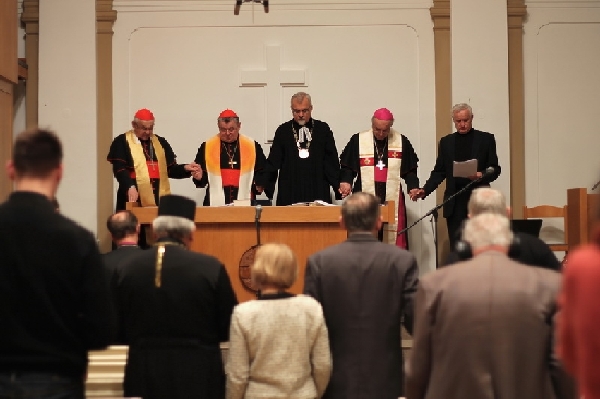
I was going to write about something completely different, but as today’s news media is most unusually, full of a story about one part of the Christian Church, I think I’ll be topical instead. Yes – most unexpectedly, Pope Benedict XVI has this day announced his intention to resign his office at the end of February – the first Pope to do so for nearly 600 years.
What is one to make of all of this? The official reason given for Pope Benedict’s decision to resign is his increasingly frail health. He is nearly 86 years old and in recent times, has been pushed around St. Peter’s Cathedral in what might best be described as a ‘papal trolley’. Those who support this explanation point out that he oversaw the decline in health of his predecessor Pope John Paul II and the paralysis this brought upon the leadership of the Roman Catholic Church. Some even say that he actively suggested to John Paul II, that he should resign, and that he is now acting upon his own advice.
There is always the alternative view of the conspiracy theorists. These suggest that Pope Benedict has been the victim of an internal power struggle within the Roman Catholic Church hierarchy. That he jumped before he was pushed or he was aware of some new sexual or financial scandal breaking and wants to get out before it does. Whilst personally, I am perfectly happy to accept the former official explanation, I do find it interesting that two Irish former members of the RC Church who are now part of my Prague Anglican congregation, have both suggested to me today that there is much more going on behind the scenes than the official explanation. Maybe they are right in recognising what they believe is happening from their own personal experiences of the Roman Catholic Church.
A big religious news story such as this, has once more revealed the religious ignorance of so many journalists. The best one I’ve seen so far is on the BBC News website, who have a quotation from ‘the newly enthroned Archbishop (of Canterbury, Justin) Welby’. Please note BBC, that Bishop Justin Welby is not being enthroned as Archbishop of Canterbury until 21st March 2013. You could try checking his website 🙂
What I have also seen and read today, is what I have experienced many times when visiting the next of kin of a recently deceased person for whom I’ve been asked to officiate at their funeral. Everybody is full of what a wonderful person Pope Benedict is and has been. No quoted speakers are being critical of his pontificate, with the obvious exception of a few total secularists. Yet whilst I would not want to question Pope Benedict’s own personal Christian faith or his devotion to the Roman Catholic Church, I have to say that I am not unhappy to see him resign. However, I will say that I fully respect and admire his stated reasons for doing so. He has now set a precedent for his future successors by indicating that they are not required to stay in office until they die!
Like many practising Roman Catholics and others, I believe that the pontificate of Pope Benedict XVI, has taken the Roman Catholic Church away from the major reforms instigated by the Second Vatican Council in the 1960s. One of the most telling examples of this is the fact that his resignation announcement today, was made in Latin! Whilst he has made positive ecumenical statements, especially when visiting countries which do not have a Roman Catholic majority population such as the United Kingdom, his actions speak louder than words. The creation of the Ordinariate for disaffected Anglicans, behind the back of Archbishop Rowan Williams, is a particular example.
Inevitably, the news media is already full of suggestions as to who will be elected as the successor to Pope Benedict. As I mentioned earlier, such discussions once more show the ignorance of many journalists. But whoever is elected as the next Pope, is going to have to face up to a number of pressing realities if they really want the Roman Catholic Church to survive into the 21st century. Many of these have been articulated by the Austrian Pfarrar Initiative which I’ve written about previously on this blog. It will be most interesting to see who is elected and how that person sets about addressing issues such as the declining number of priestly vocations in Europe and North America, pastoral care and admission to the sacraments for divorced and remarried believers, etc, etc.
I finish this post with a joke from a German website, posted well before today’s announcement. The current Pope and God are having a discussion.
Pope Benedict asks God, “Will there ever be married priests?” God answers, “Not in your lifetime”.
Pope Benedict then asks God, “Will there ever be female priests?” God answers, “Not in your lifetime”.
Pope Benedict then asks God a final question. “Will there be another German Pope?” God answers, “Not in my lifetime!”


























